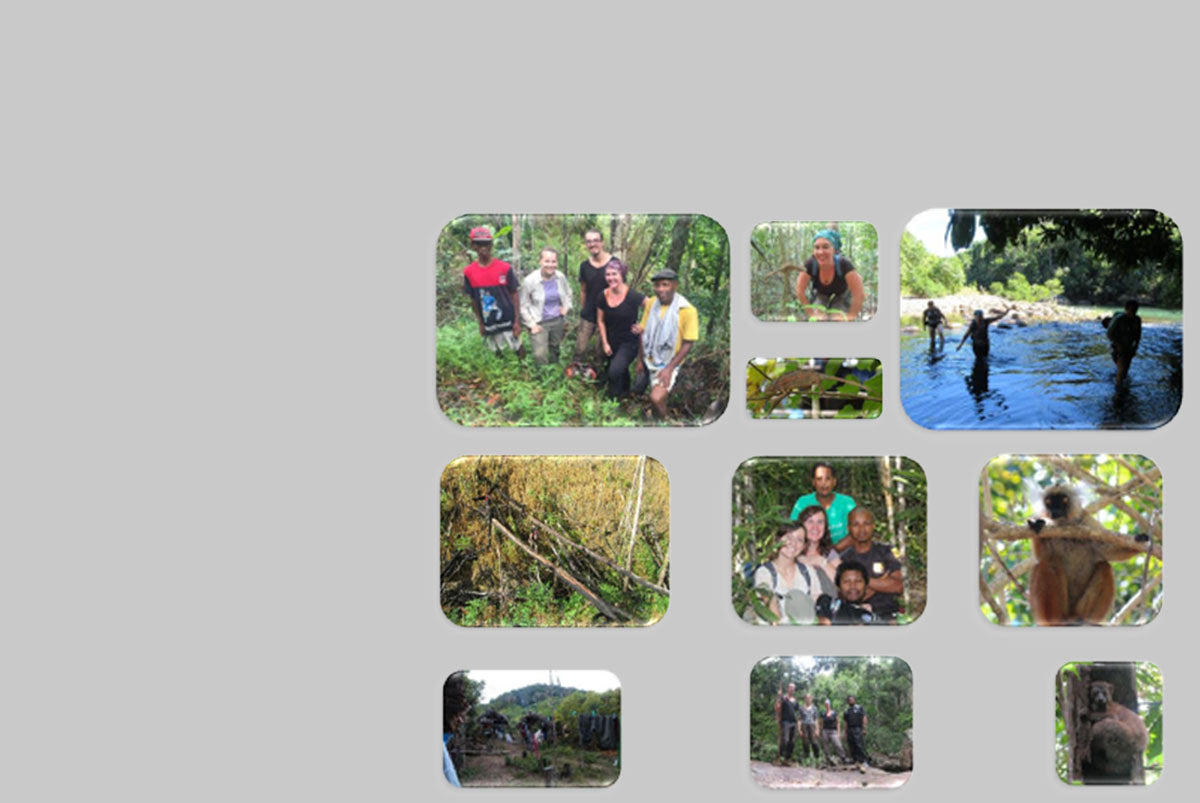
Conserving Lemurs champions biodiversity in Madagascar, protecting these charismatic primates from deforestation while educating locals about the importance of preserving their habitat.
Earlier in 2016 the Alpkit Foundation was delighted to help towards supporting Caitlin in buying necessary equipment for Malagasy students working on a research project studying the critically endangered blue-eyed black lemur, one of the most threatened primates to date. This equipment can then be used for their future studies and careers. She sent through a quick report of what they have been up to.
" I began the first of five months in northwest Madagascar studying the potential hybridization between two different species of lemurs—the Critically Endangered blue-eyed black lemur (Eulemur flavifrons) and the black lemur (Eulemur macaco). During this time I collected data from an allopatric population of black lemurs and explored the contact zone between the two species. Specifically, we were looking at the lemurs’ social behaviours, mating systems, and vocalizations. In order for two separate species to hybridize, we would expect to find that these characters converge and become more similar in places where their distribution overlaps. When analysed, these data will help us understand how lemur species evolve. Results also will be used to establish the basis for whether a hybrid management plan is needed to help further protect blue-eyed black lemurs and lemurs.
The population of black lemurs that we studied live in an area known asAndranomatavy on the Ampasindava Peninsula. This remote area can only be accessed via a boat that leaves from the port town of Ankify. Then it is a six hour hike, with all of our food, equipment and personal supplies on our backs. There was no real camp in Andranomatavy, so we did the best we could to construct our own place. Despite this difficulty, with 10 people in camp, it felt like a real home! There were two local guides, a local cook, two University of Antananarivo students, and three volunteers. This meant there was never a dull moment. Lemurs were followed between 0600 and 1700 hours, six days a week for two months. This provided many opportunities to see not only lemurs, but also all the other unique wildlife this region has to offer. By the end of our time there, we had collected over 2,500 discrete social interactions and 385 vocalizations.
The second half of this field season was spent trying to locate the contact zone between the two species of lemurs. This work has proved difficult, but informative. Hybridization is believed to occur in and around the Manongarivo Special Reserve. In addition to being extremely remote, with only foot access, this area is steep and can reach elevations of up to 1600m. Often we had to wade through rivers, cross fallen trees, dodge massive wasp nests, bushwhack through dense vegetation, and climb sheer rock walls—but this was all just part of the adventure. We had four villages that we made our base camps, from which we then further explored the surrounding forests. The lemurs here were exceptionally fearful of humans, and therefore nearly impossible to locate. We did however find a group of blue-eyed black lemurs living far outside of their known distribution in black lemur territory. Further work in 2017 will allow us to explore the possibility that this in fact the contact zone between the two species.
By the end of our time in Madagascar, we had gathered a great deal of very important data. None of this would have been possible though without a very dedicated team of local workers and volunteers. Each person on this team contributed expertise and knowledge (and positive vibes) that made this such a successful field season."